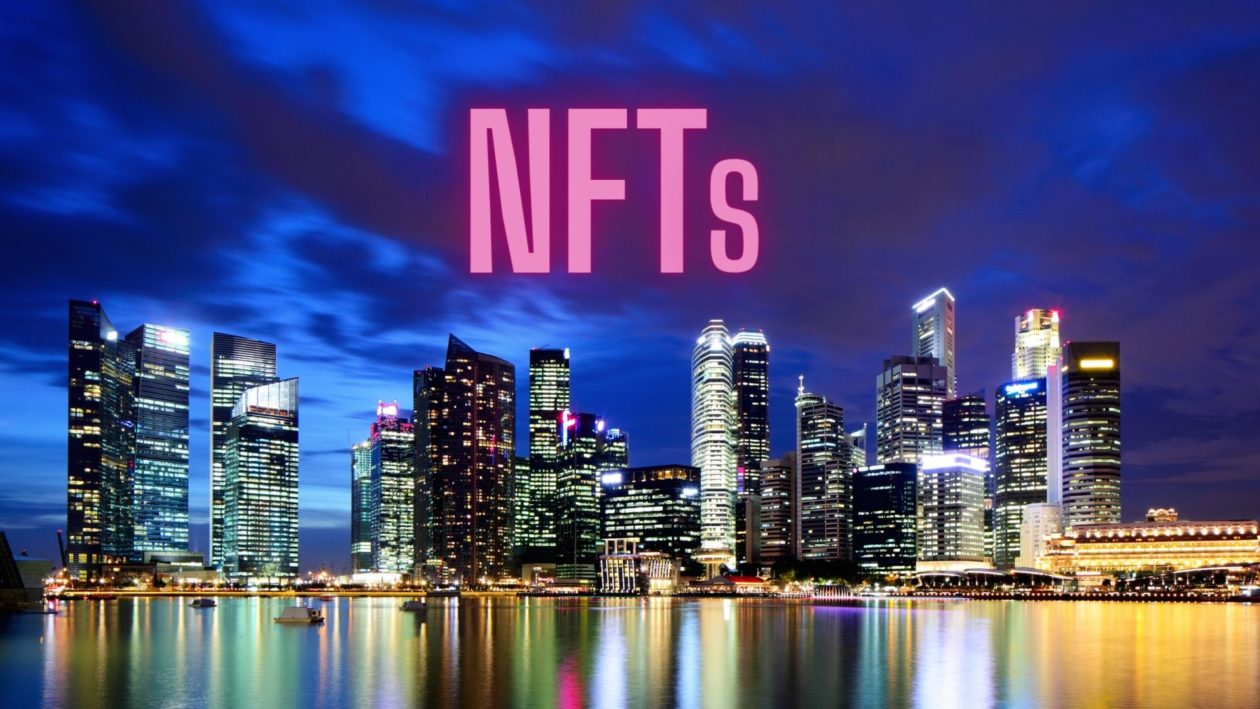The explosion in non-fungible token sales in this new year is only the beginning of what’s to come in 2022 as NFT adoption in the East is poised to surpass that in the West, experts say.
“I do believe that very, very soon Asia will actually overtake the Western market in this new crypto NFT world,” Sithi Srichawla, CEO of Singapore-based platform and creative studio EAST NFT, told Forkast. “The Asia culture has so much to give, in whatever form… [and we] invite the Western world to see what Asia has to offer, which I think we will see very soon.”
NFTs have experienced a boom since late 2020 with the runaway success of NBA Top Shot. But Asian consumers have been relatively slower to jump into this world — until now.
On the creative side, Asia has been surging, with Hong Kong-based Animoca Brands — a blockchain gaming company now valued at US$5 billion — at the lead of the region’s NFT pack. Aside from NFTs for its own games, Animoca is also a primary investor in Axie Infinity, the breakaway hit from Vietnam-based Sky Mavis for which NFTs are central to its play-to-earn business model.
Metakovan, a crypto mogul from India who lives in Singapore, also helped put NFTs on the global map with his record-shattering US$69 million purchase last year of an NFT collage by the artist Beeple.
But in terms of Asia’s general public, the reaction to NFTs has been relatively muted.
While there is not a lot of country data on NFT sales, other proxies suggest that the bulk of NFT transactions did not occur in Asia
Web traffic for the OpenSea NFT marketplace — which last year represented over 90% of NFT sales — indicates that over 60% of visitors to the online marketplace came from the United States. No Asian country ranked in the top 5, and the fifth-ranked country — Canada — represented only about 2% of OpenSea traffic. Although there are Asian-language NFT marketplaces, their volumes are minuscule compared to OpenSea’s.
According to Chainalysis, the blockchain analytics firm, the combined regions of Central, Southern and Eastern Asia have almost identical traffic related to NFTs as the combined regions of Western Europe and North America, at roughly 37% of global traffic each, despite Asia having more than four times the population.
But the NFT customer base may be shifting. This year, even as the market for cryptocurrencies like Bitcoin remains in the doldrums, NFTs are exploding in popularity — and most likely being led by customers in Asia.
OpenSea has already beaten its monthly record set in August 2021, recording over US$4 billion in sales in the first 20 days of January alone, according to Dune Analytics. Upstart marketplace LooksRare has fared even better, recording US$5 billion in sales since its Jan. 10 launch.
Yehudah Petscher, NFT relations strategist at NFT data aggregator CryptoSlam, told Forkast he originally believed the surge was from buyers in the U.S. but then realized much of the activity was likely driven by Asian customers. For instance, the PhantaBear NFT collection, co-created by Taiwanese pop icon Jay Chou, recorded a seven-day trading volume of 17,194.22 ETH (US$53,783,638) last week, knocking Bored Ape Yacht Club off its longtime top perch.
The global market will likely shift even more and might be unrecognizable once Asia’s 4.7 billion people — or nearly 60% of the world’s total population — become activated as NFT consumers. “I’m expecting the type of sales we’re seeing now to be 100x, honestly,” Petscher said. “It’s going to be a number that’s probably going to blow us away soon.”
In China, the world’s most populous country, cryptocurrency transactions may be illegal, but NFTs are allowed, so long as there is a holding period after purchase and no quick resale.
Last week, China’s state-backed blockchain services network (BSN) announced it would launch NFT infrastructure by the end of this month. Earlier in the month, CryptoPunk #8690 was sold at an auction in Shanghai for 5,232,500 yuan, or US$823,300. Though the Chinese government requires that NFTs are bought and sold as “digital collectibles” and prohibits speculation, the sale suggests Asian market interest in NFTs that — unlike Chou’s PhantaBears — have no overt connection to Asia.
One industry watcher told Forkast he expects lawmakers in the region, including China, to take a light-touch approach to regulating NFTs, as non-fungible assets — such as works of art — are typically regulated less strictly than fungible assets like currency and securities.
“If [non-fungible assets] are regulated in a way they have been historically… It’s one of the reasons people are excited about NFTs because they feel more comfortable to operate in an unregulated environment,” said James Quinn, Managing Partner at Q9 Capital.
But before NFTs can find a mass audience — whether in Asia or elsewhere in the world — the technology of setting up and using crypto wallets and navigating decentralized finance must become easier to use.
“The hurdle that people face to operate in anything in digital assets and crypto has to lower,” Quinn said. “Not everybody can yield-farm all day long, or not everybody can punt NFTs all day long, right?”
EAST NFT is now offering a custodial wallet and allowing users to buy NFTs using credit and debit cards, to try to make the space as user-friendly as possible. Srichawla says his company believes that in Asia in particular, further growth in the NFT market will hinge on the general public’s comfort level with the technology.
“The mass market is what Asia relies on,” Srichawala said, citing his home country, Thailand, as an example. “We’re not dominated by crypto whales or crypto purists.”
Srichawla believes the real boom in the region will come once the overall market has reached critical mass, giving Asian brands and creators the confidence to invest more in selling NFTs — something that takes a little bit longer than for their U.S. and European counterparts.
“[Asian market leaders] are very cautious about their consumers,” he said. “But in the western world, there’s a little less care of the market. That’s why it’s taking a bit more time for the Asian market to properly move in this space.”





